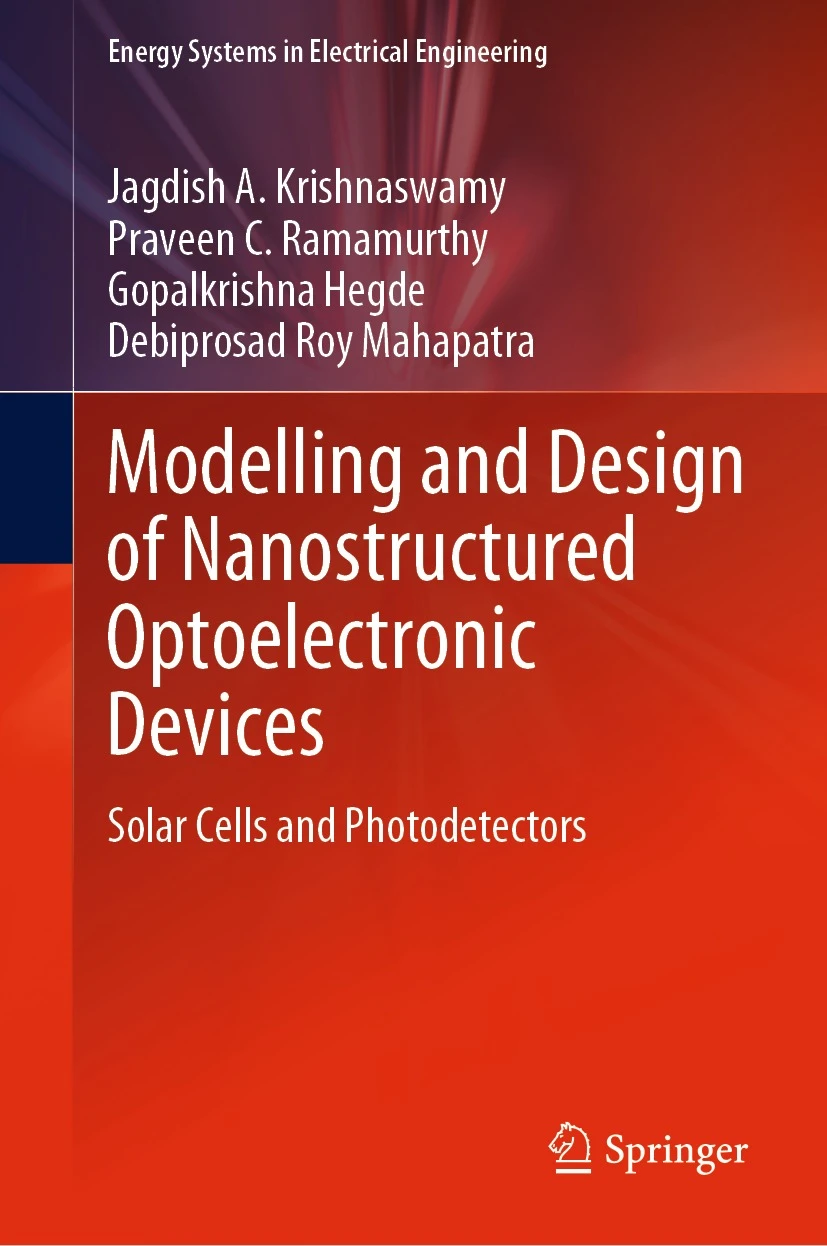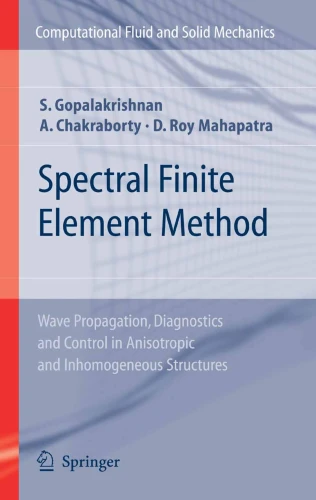Books
Modelling and Design of Nanostructured Optoelectronic Devices
Solar Cells and Photodetectors
Book | © 2022
Authors : Jagdish A. Krishnaswamy, Praveen C. Ramamurthy, Gopalkrishna Hegde, Debiprosad Roy Mahapatra
Overview
- Focus on bio-inspired nanostructured optoelectronic devices with improved optical and charge transport
- Unified theoretical foundation for optoelectronic device modelling
- Example-based demonstration of systematic design and fabrication of nanostructured optoelectronic devices
About this book
This book approaches the design of functionally superior optoelectronic devices through the use of bio-inspired nanostructures and multiscale material structures through a step-by-step approach. The book combines both the fundamental theoretical concepts involved in understanding and numerically modelling optoelectronic devices and the application of such methods in addressing challenging research problems in nanostructured optoelectronic design and fabrication. The book offers comprehensive content in optoelectronic materials and engineering and can be used as a reference material by researchers in nanostructured optoelectronic design.
Spectral Finite Element Method
Wave Propagation, Diagnostics and Control in Anisotropic and Inhomogeneous Structures
Book | © 2008
Authors : S. Gopalakrishnan, A. Chakraborty, D. Roy Mahapatra
Overview
- First to apply SFEM to inhomogeneous and anisotropic structures in a unified and systematic manner
- Readers will gain a complete understanding of how to formulate Spectral Finite Element; learn about wave behaviour in inhomogeneous and anisotropic media; and, be able to design some diagnostic tools for monitoring the health of a structure
- The theory is supported by tables, figures and graphs; all the numerical examples are so designed to bring out the essential wave behaviour in these complex structures
- Includes supplementary material : sn.pub/extras
-
About this book
Wave propagation is an exciting field having applications cutting across many disciplines. In the field of structural engineering and smart structures, wave propagation-based tools have found increasing applications, especially in the area of structural health monitoring and active control of vibrations and noise. In addition, there has been tremendous progress in the area of material science, wherein a new class of structural materials is designed to meet particular applications. In most cases, these materials are not isotropic as in metallic structures. They are either anisotropic (as in the case of laminated composite structures) or inhomogeneous (as in the case of functionally graded materials). Analysis of these structures is many orders more complex than that of isotropic structures.
For many scientists/engineers, a clear difference between structural dynamics and wave propagation is not evident. Traditionally, a structural designer will not be interested in the behavior of structures beyond certain frequencies, which are essentially at the lower end of the frequency scale. For such situations, available general-purpose finite element code will satisfy the designer’s requirements. However, currently, structures are required to be designed to sustain very complex and harsh loading environments. These loadings are essentially multi-modal phenomena, and their analysis falls under the domain of wave propagation rather than structural dynamics.
Evaluation of the structural integrity of anisotropic and inhomogeneous structures subjected to such loadings is a complex process. The currently available analysis tools are highly inadequate to handle the modeling of these structures. In this book, we present a technique called the “Spectral Finite Element Method,” which we believe will address some of the shortcomings of the existing analysis tools.

